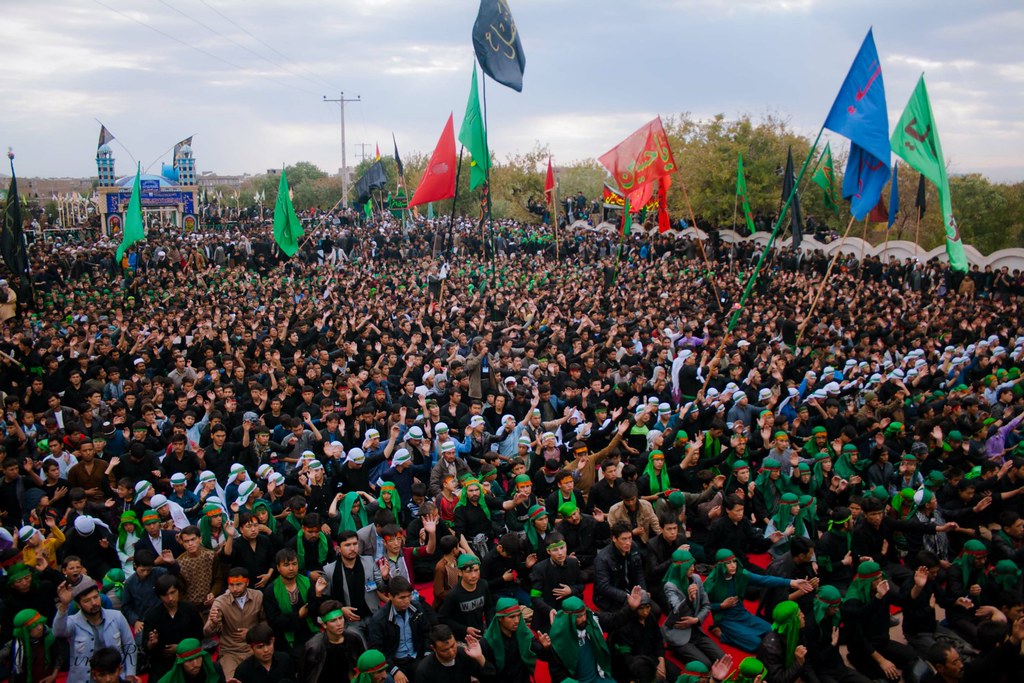With a long history of persecution and the Taliban’s particular brand of hatred and ruthless violence towards them in previous years, Shi’a Hazaras in Afghanistan are fearing for their lives and have gone into hiding. Maryam Kanwer and Jaffer Mirza working the IDS-led Coalition for Religious Equality and Inclusive Development (CREID) recently spoke to a number of members of the Shi’a Hazara community both within Afghanistan and abroad.
With all foreign forces gone, Afghans are now at the mercy of the Taliban, infamous for their ruthlessness and hatred towards women and religious/ethnic minorities, particularly Shi’a Hazaras. We recently spoke to a members of the Shi’a Hazara community both in Afghanistan and from Afghanistan, who shared with us their palpable fear of what is to come now that the Taliban are back in power.
Hazara persecution in Afghanistan
Hazaras in Afghanistan have faced centuries of extreme violence at the hands of both state and non-state actors. They are targeted for their Shi’a faith, their distinctive ethnic origins, and their having separate economic and political roots.
When the Taliban seized power in 1996, they declared jihad on the Shi’a Hazara which was followed by years brutal repression and persecution, including mass killings. For example, when the Taliban captured Mazar Sharif, a Sh’ia Hazara-dominated city in Balkh province in 1998, they searched for males door-to-door and killed around 8,000 Sh’ia Hazaras and raped their girls. Those who were not killed there and then were put in container and hundreds were asphyxiated. Even when not in power, the Taliban continued this systematic targeting: between 2014 to 2018, at least 181 Sh’ia Hazaras were killed in major attacks carried out by the Taliban, whilst Islamic State (IS) and the Taliban appeared to combine their efforts in 2017, when 40 Sh’ias were slaughtered in the village of Mirza Oleng, in the northern province of Sar-e Pol.
Hazaras already experiencing declining religious freedoms
It’s not even been a month since the Taliban takeover and Shi’a Hazaras are already witnessing the decline of their religious freedom.
We spoke to Reza*, 35-year-old and the eldest brother and breadwinner in a family of five. Currently in Kabul, he hasn’t left the house for daily prayers, groceries and even the Ashura procession, an essential part of the Shi’a faith, for fear of persecution. He said “Taliban are promising amnesty, but we don’t trust them”.
Zainab*, a 27-year-old artist and first year university student at the American University, is also in hiding in Kabul. She told us that she did not attend this year’s Ashura procession either. This act of self-restriction was particularly noticeable this year. Kabul, particularly the western part of the city, usually turns alive during the month of Muharram with the Ashura’s black flags of sorrow and multiple processions during the first 10 days of the month. However, decreased attendance meant the number of processions were reduced to only one this year.
“[In contrast] to previous years, only a tiny Ashura procession was taken out to the streets in Kabul whilst the rest remained indoors. Mostly due to self-censorship for fear of reprisals from Taliban”, said Saleem Javed, a Sweden-based Shi’a Hazara activist. Homira Rezai, chair of Hazara Community in the UK, also confirmed that “none of the cousins was able to go to any Muharram majlis because of the fear”.
Besides religious gatherings, Hazaras are now limiting their presence in the public sphere. We spoke to Farwa who told us that, like Reza, her family also hasn’t gone out for groceries and daily prayers. Homira re-affirmed this “I don’t know any of my cousins who are able to either go to back work or education”. Zainab has not left home since the Taliban takeover. Her mother had a heart attack on the day of the blasts at Kabul airport and they couldn’t take her to the hospital. When we asked her about her mother’s health, she said, “mentally she is not well. She thinks a lot about my brothers and about the situation.”
The ‘changed’ Taliban: an optical illusion
In their first press conference, the Taliban masqueraded themselves as the ‘changed’ Taliban who will protect freedom of speech, a free press, women and minorities rights. They announced a general amnesty for those who had worked for the previous regime. Pictures circulated on social media in which Taliban were seen to be attending a Sh’ia Muharram majlis in Kabul. In an incident where some Taliban fighters took down the Muharram flags, these were reinstated again. Through these gestures, the Taliban want the world to believe that they are responsible this time round, and should therefore be given legitimacy and recognition.
However, many, including the members of the Shi’a Hazara community, feel the Taliban’s tactics are deceptive and temporary. Between 4-6 July 2021, almost 40 days ago before the takeover, Amnesty International reported that the Taliban was responsible for the “brutal massacre” of nine Hazara men in the village of Mundarakht, in Ghazni province. “The Taliban will persecute them [Shi’a Hazaras] once the media’s attention goes away from Afghanistan and after their Emirate is recognised by some countries”, Saleem Javed warned.
In fact, the Taliban have continued their persecution and harassment of Shi’a Hazaras outside Kabul even since the takeover. The statue of Abdul Ali Mazari, an anti-Taliban Shi’a Hazara leader who was later tortured and killed by the Taliban, was destroyed. A Shi’a cleric based in Kabul told us that the situation in Jaghori, a district in Ghazni province, is disturbing and the local Shi’a Hazara population is being harassed and threatened by the local amir whom the cleric defined as ‘very extremist’.
Even if one were to believe that the Taliban leadership has changed, it does not mean that their fighters and commanders on the ground will conform to their ‘new’ vision, particularly on Shi’a Hazaras. In a recently posted video on Twitter, two Taliban fighters can be heard saying that if their amir allows, not a single Hazara will survive. The infamous Taliban slogan ‘Tajiks to Tajikistan, Uzbeks to Uzbekistan, and Hazaras to goristan [the graveyard]’ reflects how ingrained the hatred is for Shi’a Hazaras among the Taliban. One should not forget that hatred for Shi’a Hazaras in Afghanistan has a more than 100-year history.
As Taliban spokesman Zabihullah Mujahid once confessed, the Taliban are not trained to respect women. A similar question also arises in relation to the Shi’a Hazara: are the Taliban and their fighters, who have been inculcated for decades that Shi’as are ‘infidels’ and bigger enemy than women, trained to respect the lives of Hazaras and their religious freedom?
Three things the international community should to
This is just the beginning of a new Taliban era and many fear what will happen once the Taliban get recognition and Afghanistan loses the media attention. However, there are a few actions that the international community can urgently take:
- Consider religious and ethnic minorities such as Shi’a Hazaras to be at risk of violence and discrimination by the Taliban, and therefore a vulnerable group whose evacuation should be among the top priorities;
- Monitor the humanitarian situation, specifically the treatment of religious minorities, as well as other groups at high risk;
- Urge Taliban authorities to allow the UN and other independent entities to monitor the human rights and situation in relation to Freedom of Religion or Belief on the ground.
*Not their real names.




